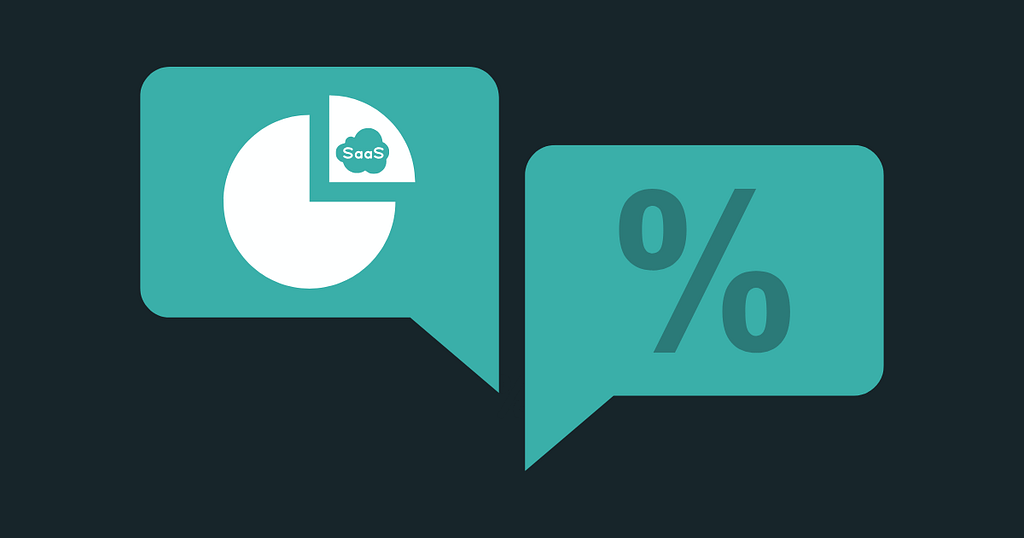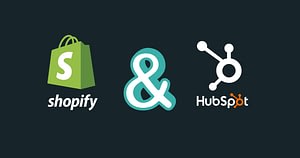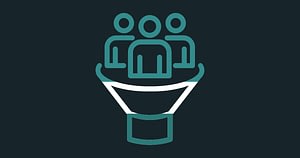Achieving success in the fiercely competitive SaaS field requires businesses to maximize their conversion rate. This critical metric measures the effectiveness of marketing and sales efforts, meaning how many leads turn into paying customers. A low-conversion scenario would be when a thousand visitors land on your page, but only some become buyers. This is not ideal! To make sure this doesn’t happen, it’s essential for companies, new or old, within the sector to understand all they can about optimizing SaaS conversion rates. Herein lies an informative guide outlining strategies and tips that should set any business along its successful path toward driving revenue from increased conversions.
Key Takeaways
Understanding SaaS conversion rates is essential for assessing marketing and sales performance.
Key factors influencing SaaS conversion rates include industry type, lead generation channels, target market size, user experience & personalization.
Strategies to optimize SaaS conversions involve data analytics & CRO tactics. Mistakes such as neglecting onboarding or mobile optimization can hurt results.
Understanding SaaS Conversion Rates

The user journey from lead to customer is an essential metric for businesses in the SaaS industry. Conversion rates are key growth indicators, providing valuable insight into sales process funnels and offering a granular understanding of their capacity to convert leads. Subsequently, this data can be used to improve marketing and sales efforts to increase total revenue by gaining more customers. Funnel conversion rate evaluation helps measure the success of initiatives like demos, which contribute towards driving these figures overall. Therefore, one must understand what constitutes a successful SaaS conversion rate before strategizing how best it can be enhanced further.
What is a SaaS Conversion Rate?
Regarding conversion rates in the SaaS world, they refer to the percentage of visitors who take a specific desired action afterward. This desired outcome can be from becoming paying customers or even completing smaller steps such as turning from merely website visitors into trial users or free ones into buyers. To better comprehend this whole process, one has to understand how exactly these different conversions operate, and that is where the SaaS sales team’s cycle takes place – ranging from Awareness, Interest, Consideration/Evaluation, and Engagement till Action are all converted together towards obtaining those paying customers results via SaaS conversions of each website visitor considering their desires actions on an app.
Different Stages of SaaS Conversion
The stages of SaaS funnel conversion benchmarks typically include visitor-to-lead and opportunity-to-close. Analyzing funnel conversion rates at each phase can help enterprises find areas for improvement and modify their promotional tactics for better outcomes. It’s important to understand that these benchmarks change depending on the industry. A multitude of factors are in play here, too.
For example, lead-to-marketing qualified leads (MQLs) rate this sector’s average benchmark at an average rate of 39%. This happens when people interact with certain pieces of sales content, such as via email marketing and campaigns or via scoring techniques targeting higher engagement figures which suggest readiness for purchase qualification progressions next stage up from MQL: SQL – Sales Qualified Lead – has an established standard 42% success ratio among SaaS companies measuring opportunity through closure effectively by providing appropriate material support just in time during its middle part down the funnel.
Key Factors Influencing SaaS Conversion Rates

Conversion rates in SaaS are determined by the various stages it passes through, and several aspects contribute to their shaping. Industries’ different customer needs and competition levels influence the SaaS model’s lead generation and conversion rates. The choice of channels used for lead generation can also significantly affect its success or failure. Similarly, whether the target market is comprehensive makes a massive difference in outputting desirable results via SaaS conversions. Knowing each factor influencing these outcomes is essential if you wish to succeed with your venture into this area.
Industry Type
The effect of market type on SaaS sales funnel conversion rates depends on cost framework, affordability, and understood value within the industry. On average, the transformation and conversion rate benchmarks used for different trial models range between 15% and 60%, which can be measured against typical conversions across businesses. For example, in both the design and telecoms sectors, lead-to-visitor transformation rates are 0.9%, reflecting overwhelming competition and reliance on conventional communication platforms.
Particular industries like finance services, insurance, or health care frequently involve a lengthy decision-making process with multiple touch points necessary before it concludes – this stresses that companies utilizing SaaS need a practical sales approach alongside strategic lead nurturing steps to ensure good outcomes remain achievable.
Lead Generation Channels
SaaS companies must be strategic when selecting their lead generation marketing channels, as they need to evaluate various factors such as the target audience, ROI, and scalability. For maximum impact on conversion rates from potential customers, SaaS firms must create targeted content, foster conversations through LinkedIn posts, and write high-quality blog pieces with templates that can engage people quickly. Social media also plays a vital role in increasing brand visibility and awareness, which could generate sales-qualified leads over time. Considering all this will allow SaaS businesses to create quality conversions at cost-effective prices more effectively while integrating them seamlessly with marketing automation tools!
Target Market
The size of the sales team, marketing materials, and the target market can dramatically affect SaaS conversion rates. Those offering to Small and Medium-sized Businesses (SMBs) or the middle market may opt to create more tailored material, enhancing lead-to-MQL transformation ratios. Focusing on small firms might also reduce sales cycles since they have straightforward purchasing procedures that make transformations easier.
Conversely, those aimed at large enterprises should implement a comprehensive marketing plan that centers around properly supporting leads until their closure is successful, an example of how better understanding your demographic dramatically helps with your marketing team optimizing SaaS conversion numbers efficiently.
Strategies for Optimizing SaaS Conversion Rates

Once you are familiar with conversion rates and factors affecting them for SaaS, it is time to concentrate on tactics that can improve business performance. Even though there isn’t a single solution that suits every situation. However, specific techniques are successful when raising the conversion rate of software as a service (SaaS). These strategies include spotting and enhancing crucial contact points, introducing lead scoring & accurate targeting, and offering free trials or demos to refine communication so the product is more attractive. You are scrutinizing user journey steps to reduce resistance & enhance conversions.
Other elements like personalization also play an essential role in generating revenue and amplifying those figures, e.g., data analytics, user experience, etc. Here’s exploring these measures.
Conversion Rate Optimization (CRO) Tactics
Conversion Rate Optimization (CRO) is a process used to raise the portion of website visitors who accomplish what you want them to do on your page. A/B testing, for example, can be utilized as one CRO approach; it tests two variations of a web page or app and evaluates which version brings higher conversion rate results. The advantages are many; small changes made through these methods can help determine an optimum design that leads users toward conversions more effectively than before.
Implementing an A/B test involves setting goals, creating multiple versions, and breaking down audiences into segments during evaluation periods. Outcomes should be thoroughly assessed so that the desired variation may take effect for increased conversion rates in SaaS products and services. Tactics such as lead scoring & targeting allow businesses to make more robust decisions when optimizing their conversions while accessing essential metrics data and procedures to enhance rates.
Personalization and User Experience
Personalization and user experience have a significant effect on SaaS conversion rates. CustomizingCustomizing the value proposition to match visitor needs, expectations, and interests can lead to an increase of 50% or more in conversions and a decreased bounce rate. Likewise, UX has a considerable role in increasing average conversion rates for SaaS applications: by improving its research methods, which allows users more straightforward navigation along with trustworthiness leading up to 400%, reducing customer acquisition costs and costs significantly becomes possible, too.
Leveraging Data and Analytics
Analyzing conversion trends and identifying potential improvement areas can substantially improve SaaS conversions. A range of analytics tools, such as HelloBar, HotJar, InstaPage, ConvertBox, OptinMonster, or OmniConvert combined with Google Analytics, offer insights on visitor behavior along the customer journey for website performance optimization. The data generated from these solutions provide details about user interactions at each conversion funnel stage, enabling marketers to understand what causes a customer drop-off so it can be remedied efficiently.
They are helpful when assessing segments within audiences with high-performing channels that could positively affect conversation rates since they grant access to essential metrics to track how different groups react and interact, leading to informed decisions based upon precise results achieved through testing opportunities like A/B tests.
Case Studies: Successful SaaS Conversion Rate Optimization
Two separate companies, Volopay and T-Pro, experienced difficulties with their SaaS conversion rates. Both tackled these problems using data-driven decision-making, personalization, user experience optimization (UX) optimization, and effective conversion rate optimization (CRO).

The first step for Volopay and T-Pro & was to use thorough decision-making processes based on accurate analytics, which involved meticulous segmentation and relevant research into customer demographics, allowing tailored optimization techniques for higher conversion goals execution according to users’ needs awareness analysis. On top of that, they were also able to achieve enhanced UX through careful improvement focusing while maintaining an inclusive attitude regarding customer preferences by always keeping it specialized per individual profiles, taking into account not only small details but even suggesting specific features or content-related topics automatically generated under one roof created strong enough connection between visitors yielding significantly improved performances. To add up, CRO strategies were used constantly along with improving usability issues, getting rid of traps showing no upgrade goal management, projecting better outcomes targeting easier grasp navigating interface creating a trustful background providing ideal environment growing inner strength giving good reputation enhancing recognition finally meeting essential requirements rising head high favorable returns marking joyous outcome achievement victory over former limitations staying ahead of race Completing mission increasing unmistakable success!
Case Study T-PRO
In the SaaS sector, T-Pro’s case study with HubSpot demonstrates the transformative impact of an integrated CRM system on global expansion and conversion rates. T-Pro, a global leader in clinical documentation improvement software, faced challenges managing a fragmented tech stack and needed a comprehensive solution to support its rapid international growth. Implementing HubSpot’s CRM, T-Pro not only streamlined its operations but also achieved impressive results: a 500% increase in new website sessions, a 90% month-over-month increase in website sessions from Australia and New Zealand, more customer retention, and a notable 40% average monthly conversion of leads to deals. The integration of marketing and sales data and automated workflows enabled T-Pro to optimize customer experiences across different regions, resulting in more efficient operations and significantly improved customer engagement and conversions.
Case Study 2: Volopay
Volopay, a fintech startup founded in 2019, has made significant strides in optimizing its sales performance and scaling revenue through HubSpot’s Sales Hub. Before implementing Sales Hub, the company struggled with a cumbersome legacy CRM, leading to inefficiencies in sales operations and data management. Sales Hub’s introduction marked a turning point, resulting in a 20% increase in sales conversion rates and substantial time savings — 30% for sales reps and 40% for sales management. These improvements are attributed to Sales Hub’s comprehensive CRM capabilities, which offer a unified platform for managing sales pipelines, deepening customer relationships, and building recurring revenue. This shift has allowed Volopay to grow its revenue fourfold since its Series A funding in late 2021. The platform’s data-driven approach and ease of use have been vital to Volopay’s success, providing actionable insights across the sales cycle and facilitating compliance with ISO standards. As a result, Volopay has scaled efficiently, harnessing Sales Hub to enhance productivity and customer understanding without increasing headcount.
Their thriving example accentuates how vital customer experience optimization via personalization is when trying to achieve high SaaS conversion increases for existing customers.
Common SaaS Conversion Rate Mistakes to Avoid

When optimizing SaaS conversion rates, some potential missteps, such as disregarding CRO best practices or not measuring the testing results, can be taken. Fortunately, these issues can be resolved. Be avoided through proper planning and knowledge.
Three essential elements often get overlooked when attempting to improve SaaS conversions: user onboarding, mobile optimization, and lead nurturing. Focusing on them is crucial for success in this area. To address each element effectively, we need to understand why they should not be neglected if higher conversion rate goals are desired. Including their impact on SEO performance!
Neglecting User Onboarding
User onboarding for SaaS companies is paramount to keep conversion rates up. Failing to guide new users through a product properly can cause many problems, such as a low adoption rate of features and higher user churn levels – leading directly to issues with marketing emails, support requirements, and increased abandonment of the service by those unable to grasp how it works.
A well-crafted onboarding procedure will lead to an optimal customer experience while optimizing conversions. Metrics like time taken in the completion process or free/paid transitioning should be analyzed to ensure that SaaS integration runs smoothly. Tracking customers’ progress also provides valuable information regarding the overall effectiveness of past performance at this stage within your business environment.
Overlooking Mobile Optimization
Given the current digital age and increased usage of mobile devices as a primary way to access the web, efficient mobile optimization is an absolute necessity. Mobile optimization can enhance users’ experience, legibility, navigation capabilities, and smooth interaction on their portable gadgets. Should you disregard this factor? It could lead to lower user satisfaction rates, higher bounce rates due to less SEO effectiveness, little-to-no website traffic or conversions due to decreased visibility when looking for search engine results, and ultimately degrading conversion rate performance within SaaS platforms if these points are not prioritized effectively enough. Thus, optimizing your site to function seamlessly across any device used should be high up on your list of objectives to bring about maximum return through successful conversion methods employed therein!
Ineffective Lead Nurturing
Regarding SaaS marketing, lead nurturing is essential to the sales cycle. It involves creating relationships with prospective customers through phone calls, providing valuable content, and addressing their concerns and doubts while guiding them through the sales funnel. If neglected, this could decrease SaaS conversion rates as it disrupts building connections effectively, curating relevant material, or directing potential clients appropriately down the process.
To avoid these missteps for better results regarding lead conversion and conversions, ensure that different phases of the customer journey are considered alongside focusing more on quality rather than quantity when gathering leads. Research should be carried out before optimizing landing pages with suitable magnets aimed at your desired target audience, leading optimization website-wise, intended towards successful lead generation outcomes.
Summary
As we conclude this discussion, we must recognize there is no formula for guaranteed success when optimizing SaaS conversion rates. The crucial factor here lies in continually experimenting with your approach and strategy while staying abreast of relevant market trends and adapting your business model to fit customer needs. All successful conversion rate optimization tactics and efforts require an intimate knowledge of one’s customers, industry dynamics, and a thorough understanding of different stages associated with these conversion rates – all essential for maximizing each percentage increase achieved in any given conversion rate benchmarks! Here’s hoping our advice helps you reach new heights where SaaS businesses are concerned!
Frequently Asked Questions
What is a reasonable conversion rate in SaaS?
For SaaS companies, a reasonable conversion rate usually ranges from 15%-20%. This conversation rate is higher than what’s typically seen in other industries due to customers’ longer-term commitments regarding their conversions.
What is the average freemium conversion rate for SaaS?
The average conversion rate for SaaS companies utilizing a freemium model is 1-10%, though typically aiming at 2-5% to get optimal results based on product and other industry benchmarks.
What is the conversion rate for SaaS signup to paid?
Typically, the conversion rate from signups to paying customers for software-as-a-service (SaaS) services ranges between 15% and 30%, with B2B striving towards a higher target of 25%.
How does industry type influence SaaS conversion rates?
The industry type can profoundly impact the conversion rates of SaaS businesses, as various customer preferences and levels of rivalry shape lead generation activities. Accordingly, it is essential to consider the sector when deliberating on strategies for improving conversion figures.
What is the significance of mobile optimization for SaaS conversion rates?
Ensuring SaaS optimization for mobile devices is pivotal to conversion rates, as it gives users a better experience with fewer obstacles and thus increases profits.






